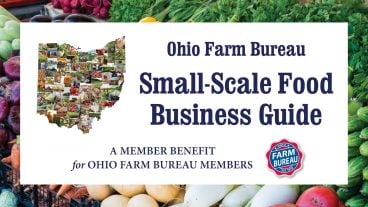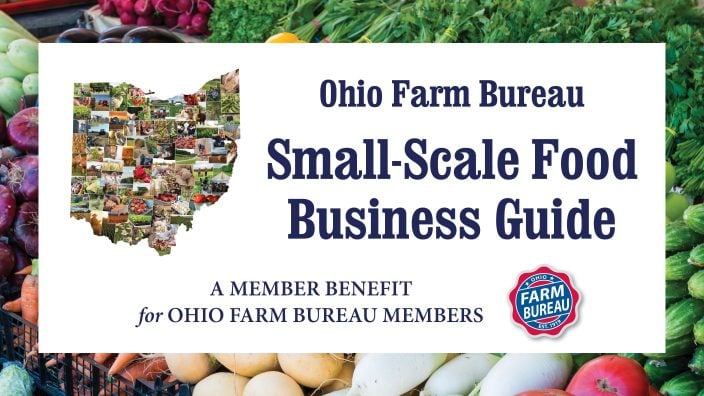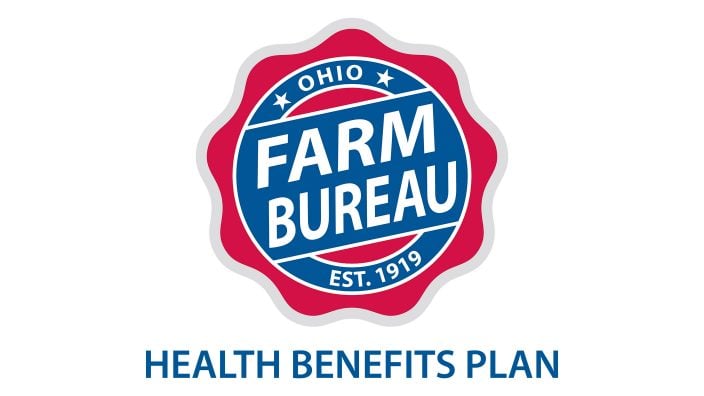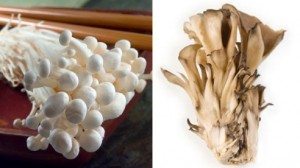Farmer’s Guide to Trucking Regulations available to Ohio Farm Bureau members
The guide includes a farm driver checklist, overview of state and federal regulations and exemptions, CDL qualifications and more.
Read More
While they’re not nearly as nutrient-dense as many other types of vegetables, mushrooms do tend to have a good supply of copper — a key nutrient not widely found in substantial amounts in other foods. They also aren’t bad sources of potassium, folate, niacin, fiber and selenium. And, prepared properly, they can be a tasty, satisfying, low-calorie meat substitute.
If you’re curious about the details regarding different types of mushrooms, you’re in luck: The U.S. Department of Agriculture has added nutrient data for seven different kinds of mushrooms to its National Nutrient Database. Now you can compare and contrast the relative nutritional merits of crimini, enoki, maitake, oyster, portabella, shiitake and white button mushrooms.
If you look, you’ll see that not all mushrooms are created equal. For example, shiitake mushrooms have a relatively high amount of copper — nearly 1 milligram per 3.5 ounces of raw mushroom, compared with crimini (a half-milligram per 3.5 ounces of raw mushrooms); portabella (less than a half milligram per 3.5 ounces); white button mushrooms (about one-third of a milligram per 3.5 ounces); maitake and oyster (about one-quarter of a milligram) and enoki mushroom (less than 0.1 milligram copper per 3.5 ounces). The Recommended Dietary Allowance for copper in adults is 900 micrograms (or 0.9 milligrams) of copper a day. Research suggests that getting enough copper can be important to heart health.
Now, 3.5 ounces of raw mushrooms is a lot of mushrooms. If you consume all your mushrooms from canned mushroom soup or by sprinkling a few slices on your salad, you won’t get much copper or anything else. But you could use mushrooms as your main dish. Portabella caps are often grilled and served like a hamburger. Or you can chop any kind of mushroom and substitute it for half (or more) of the burger or sausage in casseroles, sauces or stews.
As the water cooks out of mushrooms, the nutrients (and calories) become more concentrated. But at 20 to 50 calories per 3.5 ounces raw, mushrooms can add bulk and flavor to a dish with very few calories.
Different types of mushrooms have distinct flavors. Try new ones occasionally to see what works best for your recipes, and your palate.
This article is a service of Chow Line — Ohio State University Extension and the Ohio Agricultural Research and Development Center.
If you enjoyed this article, consider becoming a Farm Bureau member and you’ll receive ongoing access to information about your local food community, including seasonal recipes. Membership includes a free subscription to Our Ohio magazine. Learn more about other exclusive member benefits.
All photos courtesy of istockphoto.com


The guide includes a farm driver checklist, overview of state and federal regulations and exemptions, CDL qualifications and more.
Read More


Ohio Farm Bureau provides opportunities, platforms and resources to help you develop your voice in the industry and give farmers a seat at the table with leaders and legislators.
Read More

The emergency fuel waiver to allow the sale of summer gasoline blends containing 15% ethanol will lengthen the period during which Americans can continue buying E15 from June 1 to Sept. 15.
Read More

The Small-Scale Food Business Guide covers federal and state regulations for selling food products such as raw meat, dairy, eggs, baked goods, cottage foods, fruits and vegetables, honey and more.
Read More

New resources and technology are broadening the different types of sales tools and strategies available to farmers.
Read More

ODA will enroll 500,000 acres into the program for a two-week sign-up period, beginning April 22, 2024, through May 6, 2024. Contact local SWCD offices to apply.
Read More

Katie Share of Columbus has been named ExploreAg and Youth Development Specialist for Ohio Farm Bureau.
Read More

Mary Klopfenstein of Delphos has been named Young Ag Professional and Ag Literacy Program Specialist for Ohio Farm Bureau.
Read More

The plan has been updated to give sole proprietors access to more rate stability and a smart solution that offers potential savings on health care.
Read More

The American Farm Bureau Federation, in partnership with Farm Credit, is seeking entrepreneurs to apply online by June 15 for the 2025 Farm Bureau Ag Innovation Challenge.
Read More